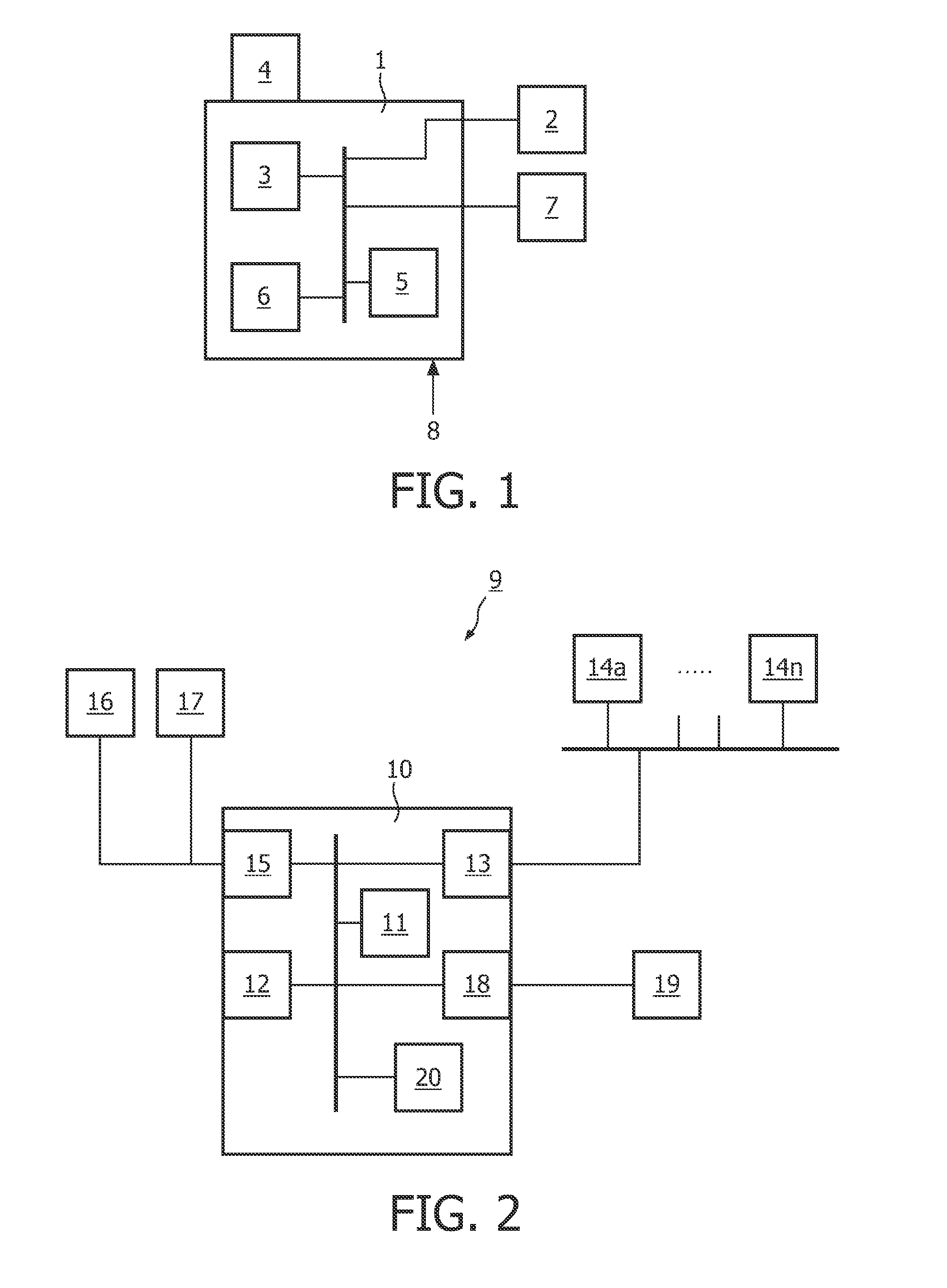Method and system for generating data for controlling a system for rendering at least one signal
a technology of generating data and a rendering system, applied in the field of generating data for controlling a rendering system, can solve the problem of not being able to recreate the atmosphere at any performance venue, and achieve the effect of avoiding repetitiveness
- Summary
- Abstract
- Description
- Claims
- Application Information
AI Technical Summary
Benefits of technology
Problems solved by technology
Method used
Image
Examples
Embodiment Construction
[0035]In the following, systems will be discussed for use in a scenario in which a person visits an event at which recorded or live music is played and wishes to re-create the experience at a later point in time. To this end, the person may use a recording apparatus 1 at the event to capture the sound and some other perceptible aspect of the atmosphere, in particular the lighting pattern, for at least parts of the duration of the event. However, it is noted that the method of re-creating the atmosphere may also be carried out on the basis of a video, e.g. a video of a live concert, not attended by that person, particularly if the ambient lighting patterns at the event are adequately represented in the video.
[0036]In the illustrated embodiment, the recording apparatus 1 comprises a microphone 2, an image sensor 3 and a wide-angle lens 4. It may also or alternatively comprise a further sensor for generating a signal representative of a further perceptible environmental variable, such ...
PUM
 Login to View More
Login to View More Abstract
Description
Claims
Application Information
 Login to View More
Login to View More - R&D
- Intellectual Property
- Life Sciences
- Materials
- Tech Scout
- Unparalleled Data Quality
- Higher Quality Content
- 60% Fewer Hallucinations
Browse by: Latest US Patents, China's latest patents, Technical Efficacy Thesaurus, Application Domain, Technology Topic, Popular Technical Reports.
© 2025 PatSnap. All rights reserved.Legal|Privacy policy|Modern Slavery Act Transparency Statement|Sitemap|About US| Contact US: help@patsnap.com



